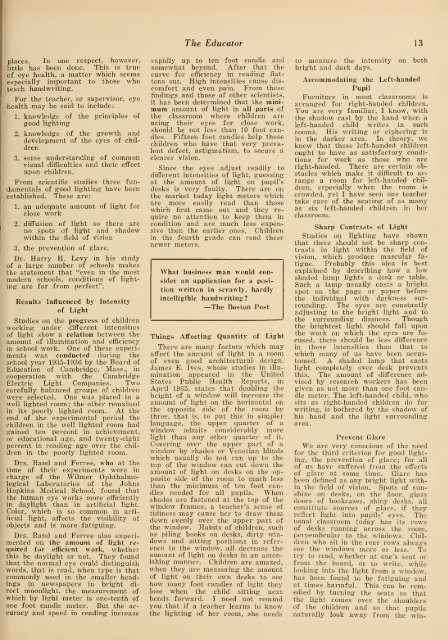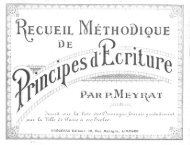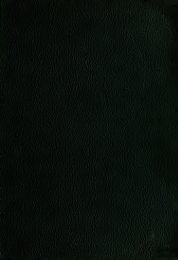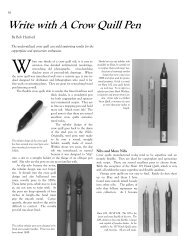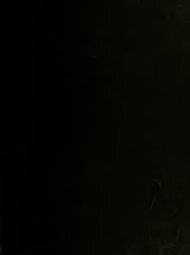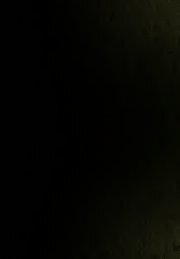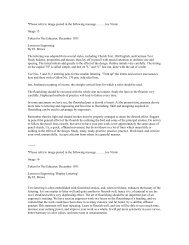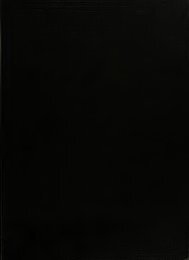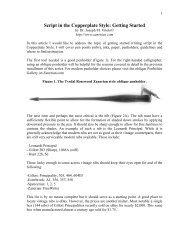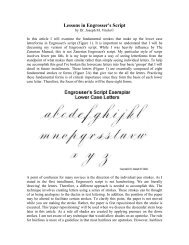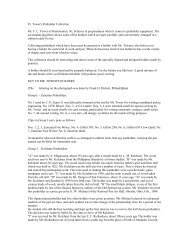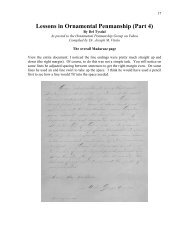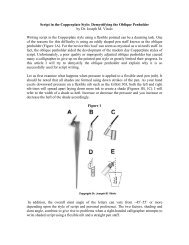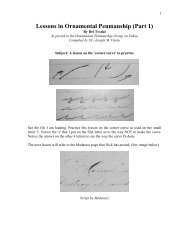The Educator (Volume 45) - IAMPETH
The Educator (Volume 45) - IAMPETH
The Educator (Volume 45) - IAMPETH
You also want an ePaper? Increase the reach of your titles
YUMPU automatically turns print PDFs into web optimized ePapers that Google loves.
I of<br />
I<br />
I modern<br />
' ing<br />
places. In one respect, however,<br />
little has been done. This is true<br />
of eye health, a matter which seems<br />
especially important to those who<br />
teach handwriting.<br />
For the teacher, or supervisor, eye<br />
health may be said to include:<br />
1. knowledge of the principles of<br />
good lighting<br />
2. knowledge of the growth and<br />
development of the eyes of children<br />
3. some understanding of common<br />
visual difficulties and their effect<br />
upon children.<br />
From scientific studies three fundamentals<br />
of good lighting have been<br />
established. <strong>The</strong>se are:<br />
1. an adequate amount of light for<br />
close work<br />
2. diffusion of light so there are<br />
no spots of light and shadow<br />
within the field of vision<br />
3. the prevention of glare.<br />
Dr. Harry H. Levy in his study<br />
a large number of schools makes<br />
the statement that "even in the most<br />
schools, conditions of lightare<br />
far from perfect".<br />
Results Influenced by Intensity<br />
of Light<br />
Studies on the progress of children<br />
working under different intensities<br />
of light show a relation between the<br />
amount of illumination and efficiency<br />
in school work. One of these experiments<br />
was conducted during the<br />
school year 1935-1936 by the Board of<br />
Education of Cambridge, Mass., in<br />
cooperation with the Cambridge<br />
Electric Light Companies. Two<br />
carefully balanced groups of children<br />
were selected. One was placed in a<br />
well lighted room; the other remained<br />
in its poorly lighted room. At the<br />
end of the experimental period the<br />
children in the well lighted room had<br />
gained ten percent in achievement,<br />
or educational age, and twenty-eight<br />
percent in reading age over the children<br />
in the poorly lighted room.<br />
Drs. Rand and Ferree, who at the<br />
time of their experiments were in<br />
charge of the Wilmer Ophthalmological<br />
Laboratories of the Johns<br />
Hopkins Medical School, found that<br />
the human eye works more efficiently<br />
in daylight than in artificial light.<br />
Color, which is so common in artificial<br />
light, affects the visibility of<br />
objects and is more fatiguing.<br />
Drs. Rand and Ferree also experimented<br />
on the amount of light required<br />
for efficient work, whether<br />
this be daylight or not. <strong>The</strong>y found<br />
that the normal eye could distinguish<br />
words, that is read, when type is that<br />
commonly used in the smaller headings<br />
in newspapers in bright direct<br />
moonlight, the measurement of<br />
which by light meter is one-tenth of<br />
one foot candle meter. But the accuracy<br />
and speed in reading increase<br />
<strong>The</strong> <strong>Educator</strong> 13<br />
rapidly up to ten foot candle and<br />
somewhat beyond. After that the<br />
cui-ve for efficiency in reading flattens<br />
out. High intensities cause discomfort<br />
and even pain. From these<br />
findings and those of other scientists,<br />
it has been determined that the minimum<br />
amount of light in all parts of<br />
the classroom where children are<br />
using their eyes for close work,<br />
should be not less than 10 foot candles.<br />
Fifteen foot candles help those<br />
children who have that very prevalent<br />
defect, astigmatism, to secure a<br />
clearer vision.<br />
Since the eyes adjust readily to<br />
different intensities of light, guessing<br />
at the amount of light on pupil's<br />
desks is very faulty. <strong>The</strong>re are on<br />
the market today light meters which<br />
are more easily read than those<br />
which first came out and they require<br />
no attention to keep them in<br />
condition and are much less expensive<br />
then the earlier ones. Children<br />
in the fourth grade can read these<br />
newer meters.<br />
What business man would con-<br />
sider an application for a position<br />
written in scrawly, hardly<br />
intelligible handwriting?<br />
—<strong>The</strong> Boston Post<br />
Things AflFecting Quantity of Light<br />
<strong>The</strong>re are many factors which may<br />
affect the amount of light in a room<br />
of even good architectural design.<br />
James E. Ives, whose studies in illumination<br />
appeared in the United<br />
States Public Health Reports, in<br />
April 1935, states that doubling the<br />
height of a window will increase the<br />
amount of light on the horizontal on<br />
the opposite side of the room by<br />
three, that is, to put this in simpler<br />
language, the upper quarter of a<br />
window admits considerably more<br />
light than any other quarter of it.<br />
Covering over the upper part of a<br />
window by shades or Venetian blinds<br />
which usually do not run up to the<br />
top of the window can cut down the<br />
amount of light on desks on the opposite<br />
side of the room to much less<br />
than the minimum of ten foot candles<br />
needed for all pupils. When<br />
shades are fastened at the top of the<br />
window frames, a teacher's sense of<br />
tidiness may cause her to draw them<br />
down evenly over the upper part of<br />
the window. Habits of children, such<br />
as piling books on desks, dirty windows<br />
and sitting positions in reference<br />
to the window, all decrease the<br />
amount of light on desks in an astonishing<br />
manner. Children are amazed,<br />
when they are measuring the amount<br />
of light on their own desks to see<br />
how many foot candles of light they<br />
lose when the child sitting next<br />
bends forward. I need not remind<br />
you that if a teacher learns to know<br />
the lighting of her room, she needs<br />
to measure the intensity on both<br />
bright and dark days.<br />
Accommodating the Left-handed<br />
Pupil<br />
Furniture in most classrooms is<br />
arranged for right-handed children.<br />
You are very familiar, I know, with<br />
the shadow cast by the hand when a<br />
left-handed child writes in such<br />
rooms. His writing or ciphering is<br />
in the darker area. In theory, we<br />
know that these left-handed children<br />
ought to have as satisfactory conditions<br />
for work as those who are<br />
right-handed. <strong>The</strong>re are certain obstacles<br />
which make it difficult to arrange<br />
a room for left-handed children,<br />
especially when the room is<br />
crowded, yet I have seen one teacher<br />
take care of the seating of as many<br />
as six left-handed children in her<br />
classroom.<br />
Sharp Contrasts of Light<br />
Studies on lighting have shown<br />
that there should not be sharp contrasts<br />
in light within the field of<br />
vision, which produce muscular fatigue.<br />
Probably this idea is best<br />
explained by describing how a low<br />
shaded lamp lights a desk or table.<br />
Such a lamp usually casts a bright<br />
spot on the page or paper before<br />
the individual with darkness surrounding.<br />
<strong>The</strong> eyes are constantly<br />
adjusting to the bright light and to<br />
the surrounding dimness. Though<br />
the brightest light should fall upon<br />
the work on which the eyes are focused,<br />
there should be less difference<br />
in these intensities than that to<br />
which many of us have been accustomed.<br />
A shaded lamp that casts<br />
light completely over desk prevents<br />
this. <strong>The</strong> amount of difference advised<br />
by research workers has been<br />
given as not more than one foot candle<br />
meter. <strong>The</strong> left-handed child, who<br />
sits as right-handed children do for<br />
writing, is bothered by the shadow of<br />
his hand and the light surrounding<br />
area.<br />
Prevent Glare<br />
We are very conscious of the need<br />
for the third criterion for good lighting,<br />
the prevention of glare; for all<br />
of us have suffered from the effects<br />
of glare at some time. Glare has<br />
been defined as any bright light within<br />
the field of vision. Spots of sunshine<br />
on desks, on the floor, glass<br />
doors of bookcases, shiny desks, all<br />
constitute sources of glare, if they<br />
reflect light into pupils' eyes. <strong>The</strong><br />
usual classroom today has its rows<br />
of desks running across the room,<br />
perpendicular to the windows. Children<br />
who sit in the rear rows always<br />
see the windows more or less. 'To<br />
try to read, whether at one's seat or<br />
from the board, or to write, while<br />
looking into the light from a window,<br />
has been found to be fatiguing and<br />
at times harmful. This can be remedied<br />
by turning the seats so that<br />
the light comes over the shoulders<br />
of the children and so that pupils<br />
naturally look away from the win-


